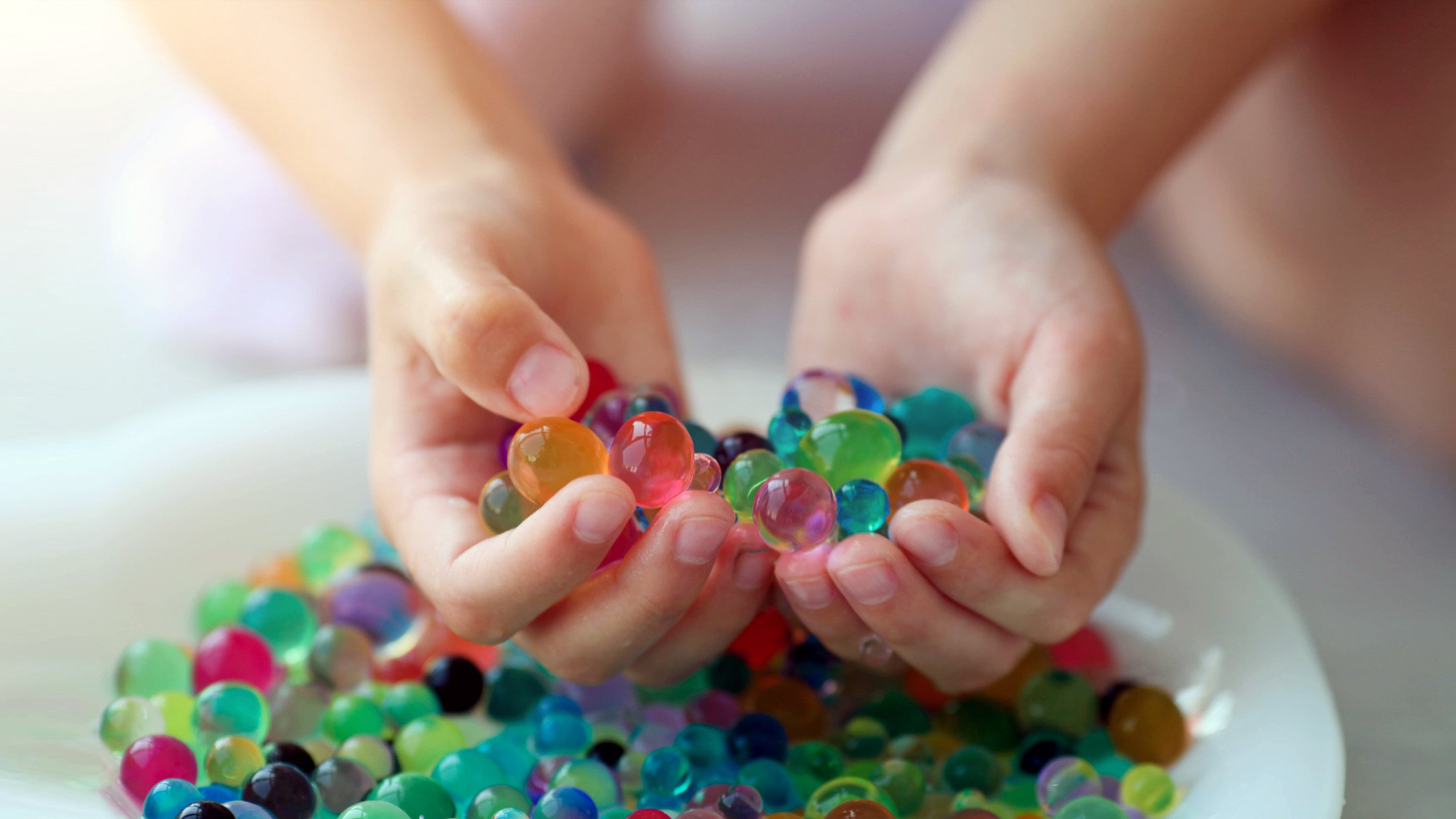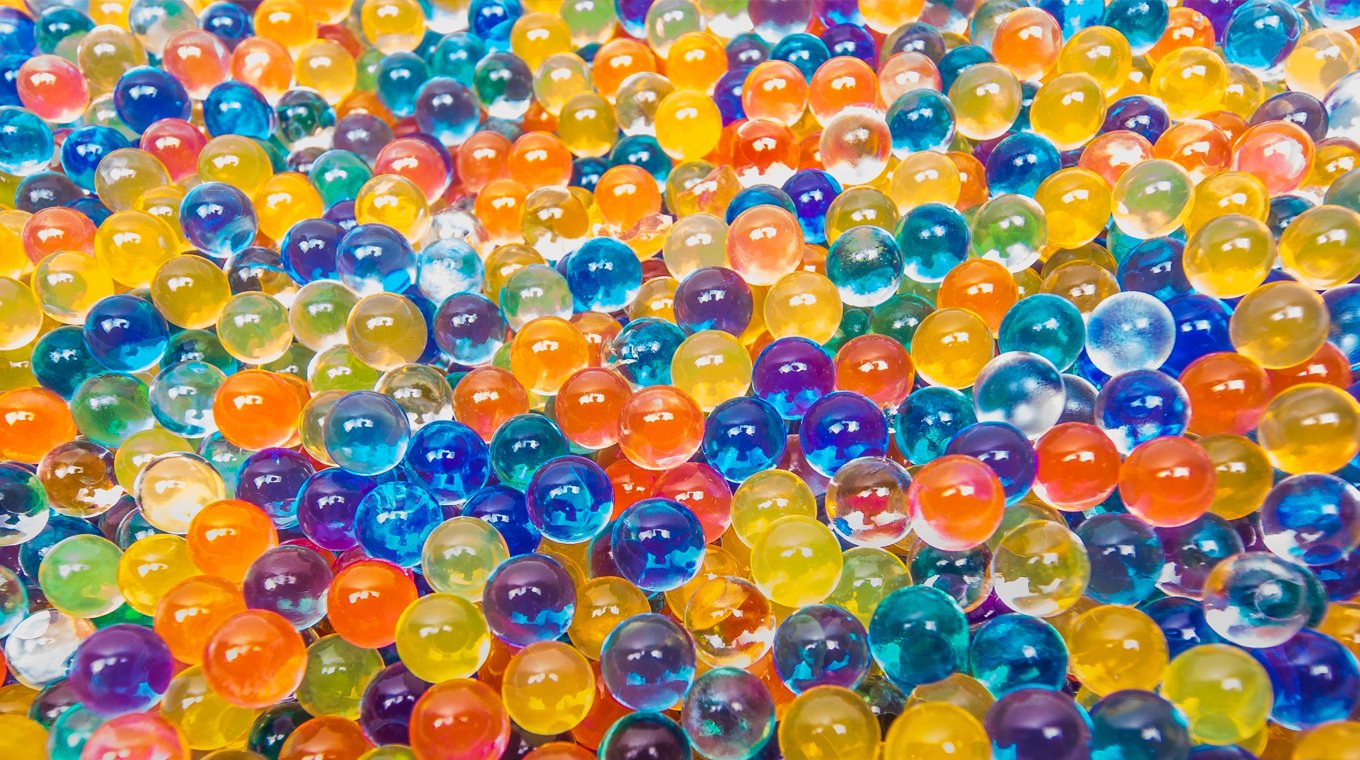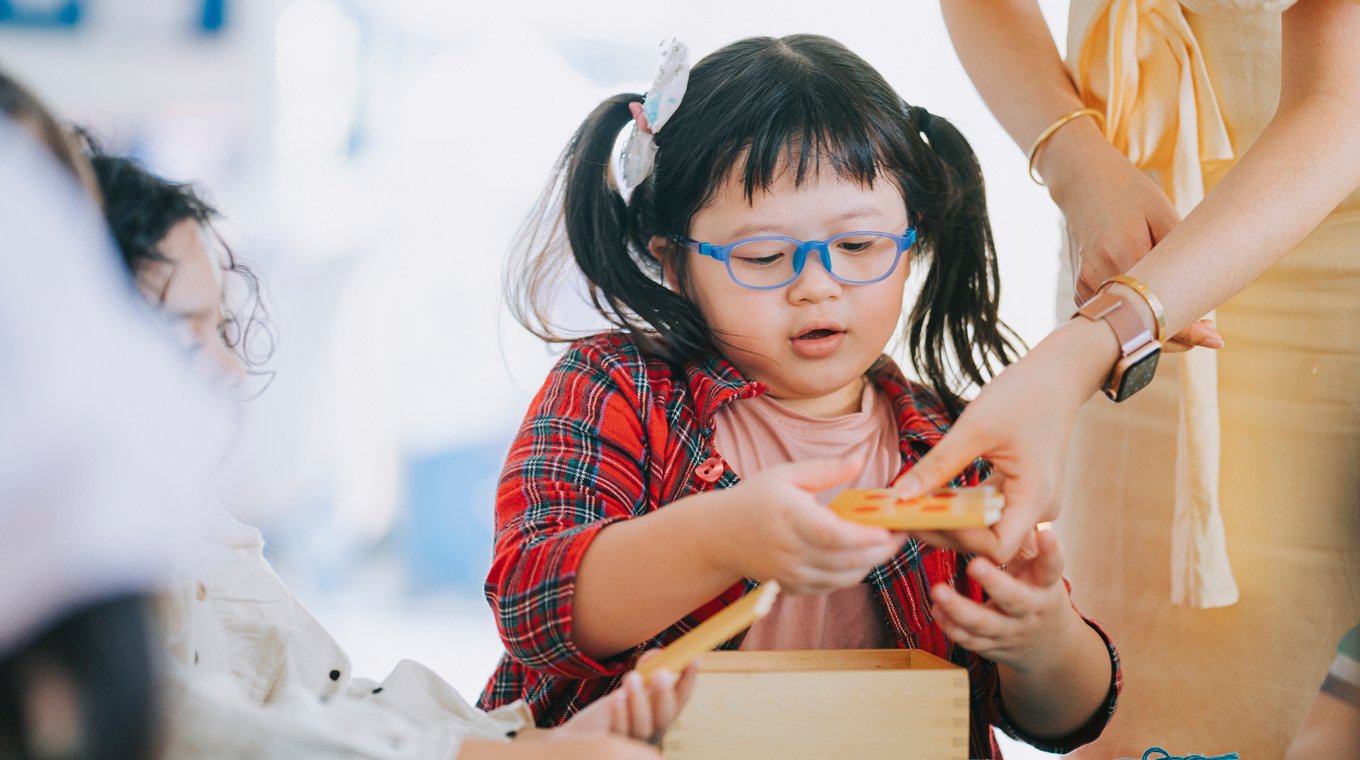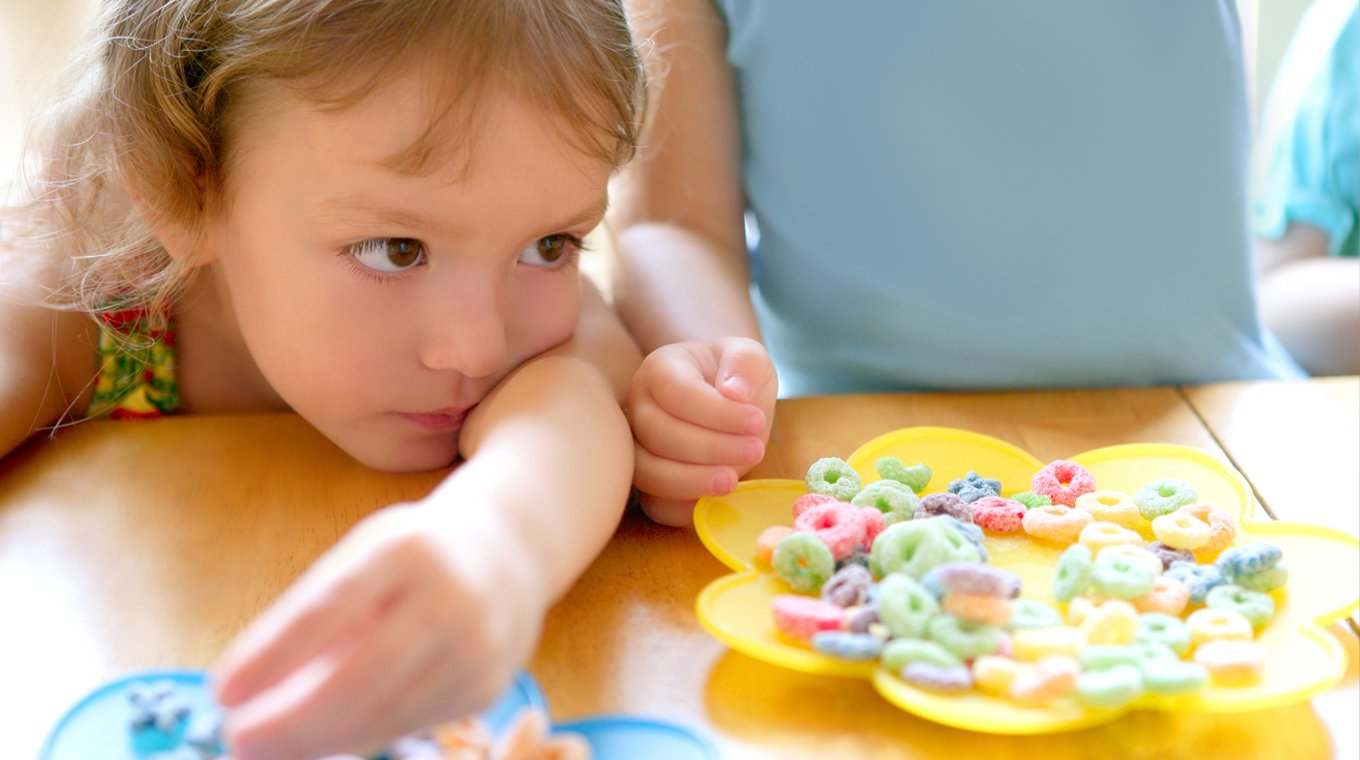
In this article
While originally created as a way to enhance a vase of artificial flowers, water beads have become a popular addition to sensory bins for toddlers and preschoolers in homes and schools throughout the country. Water beads can be found everywhere, from the dollar store to big box stores, making them an inexpensive item to benefit toddlers in hands-on sensory play.
But water beads pose safety hazards because small children can choke on them and the polymer crystals have been the cause of injuries and deaths.
Ashley and Jonathan Haugen are warning parents about the dangers of water beads after their daughter Kipley suffered injuries from ingesting them. After noticing that Kipley was just not acting like herself, they brought her to the hospital where she underwent surgery to remove a mass of water beads from her intestines. While they had imposed strict rules on their older 6-year-old daughter, Abigail, younger Kipley still managed to get her hands on the beads and swallow them.
“The beads are a choking hazard, so we discussed the safety rules and boundaries with Abigail. Kipley, our then 10-month-old daughter, was not allowed to play with the beads,” Ashley wrote on her awareness blog, Display Don’t Play. “We maintained adult supervision during Abigail’s play, and provided the girls with separate play areas.”
What are water beads?

First developed to help farmers maintain moisture in soil, water beads have served a multitude of uses over the years. Florists use the small, super-absorbent polymer crystals to keep flower arrangements hydrated — their colorful translucence provides a stunning visual to any vase of flowers — and the technology has been used to absorb fluids in items like diapers and menstrual pads. Placed in water, the beads, which start as small pellets when dry, can grow to be the size of a marble or larger.
In recent years, water beads became a key component of sensory bins for children. Pinterest is full of sensory bin ideas that cover a variety of topics and themes, using these slippery-smooth and squishy balls that are of particular interest to little hands.
Seeing the small pellets absorb water and turn into soft marbles overnight is appealing to young children, and the water beads texture is fun to play with, allowing for children to develop their fine motor skills; picking them up with fingers, grasping, pinching, and trying to maneuver the water beads with plastic tweezers.
Why are water beads dangerous?

For Kipley, simply removing the mass from her intestines wasn’t enough. Water beads are made with polyacrylamide, which is created from the neurotoxin acrylamide. Additional testing found that Kipley had endured further injuries from the toxic ingredients as a result of ingesting the water beads.
“The doctor informed us of her diagnosis,” Ashley wrote. “Toxic brain encephalopathy caused by acrylamide monomer poisoning, expressive and receptive language delay, gait abnormality, muscle incoordination, muscle weakness, at risk for autism.”
Water beads often sold under the brand names Orbeeze and MarvelBeads are marketed to children as fun sensory toys. To younger children, water beads may look like candy or something fun to eat, so they’re a potential choking hazard. Unfortunately, since the beads are designed to absorb water and expand, they often don’t make it through the digestive tract and will continue to expand inside the child’s body, posing serious health problems.
Sensory bin filler alternatives: What to use in place of water beads

If you’re interested in making sensory bins for toddlers, edible fillers are the safest choice. Blended graham crackers or Cheerios can be used to make edible sand for a beach-themed sensory bin. Add a small container of water on the side and include mini shovels and molds in the bin so that your child can create with the “sand.” Try some of the following ideas using nontoxic fillers for your child’s next sensory bin:
- Mini marshmallows for an Arctic animals sensory bin
- Crushed ice works well for a winter bin
- Oobleck (cornstarch and water) is always a fun sensory toy
- Sugar cubes are great for stacking and building
- Shredded filler paper used in gift boxes
Other sensory bin fillers that can be used instead of water beads include corn kernels for an autumn-themed bin; rice or pasta, which can be colored and dried with a mixture of food coloring and alcohol; and dry beans, like garbanzos. Bear in mind, these items are all choking hazards, so it’s important to supervise children and keep the bins out of the reach of very small children.
Sensory bins are just one way to keep your kids busy when you need time to unload the dishwasher or finally fold that load of laundry, but they are by no means the only way to engage your child. Alanna Gallo is a parent educator who tells parents that it’s OK to let go of expectations imposed by social media.
“Stop feeling obligated to make up endless activities,” Gallo wrote on her Facebook page, Play Learn Thrive Kids. “Stop scrolling Instagram for the perfect sensory bin setup. I promise your kid will entertain themselves. And if they can’t, that means they need this space, even more, to re-learn how to play independently.”
The Poison Control Center reminds caregivers to reach out to Poison Control immediately if they discover a child has swallowed a water bead. You can also call 1-800-222-1222 for immediate advice.




